An under-the-radar wine destination, Uruguay is a small country with big wines. Tannat, its flagship grape, captures the country’s character shaped by the Atlantic ocean. Family-owned wineries blend tradition and sustainability, creating a unique wine experience that stands out in the New World.


Introduction
A Small Country with Big Wines
Uruguay’s wine culture thrives with its family-owned wineries and a coastal climate reminiscent of Bordeaux. With a winemaking heritage dating back to the 18th century, most vineyards today are concentrated in the south where cooling Atlantic breezes enhance acidity and freshness.
Tannat, brought by Basque immigrants from Madiran, France, is Uruguay’s flagship grape, excelling in the flat landscape to produce some of the world’s boldest wines. This blend of heritage, climate, and innovation makes Uruguay a rising star in the world of wine.
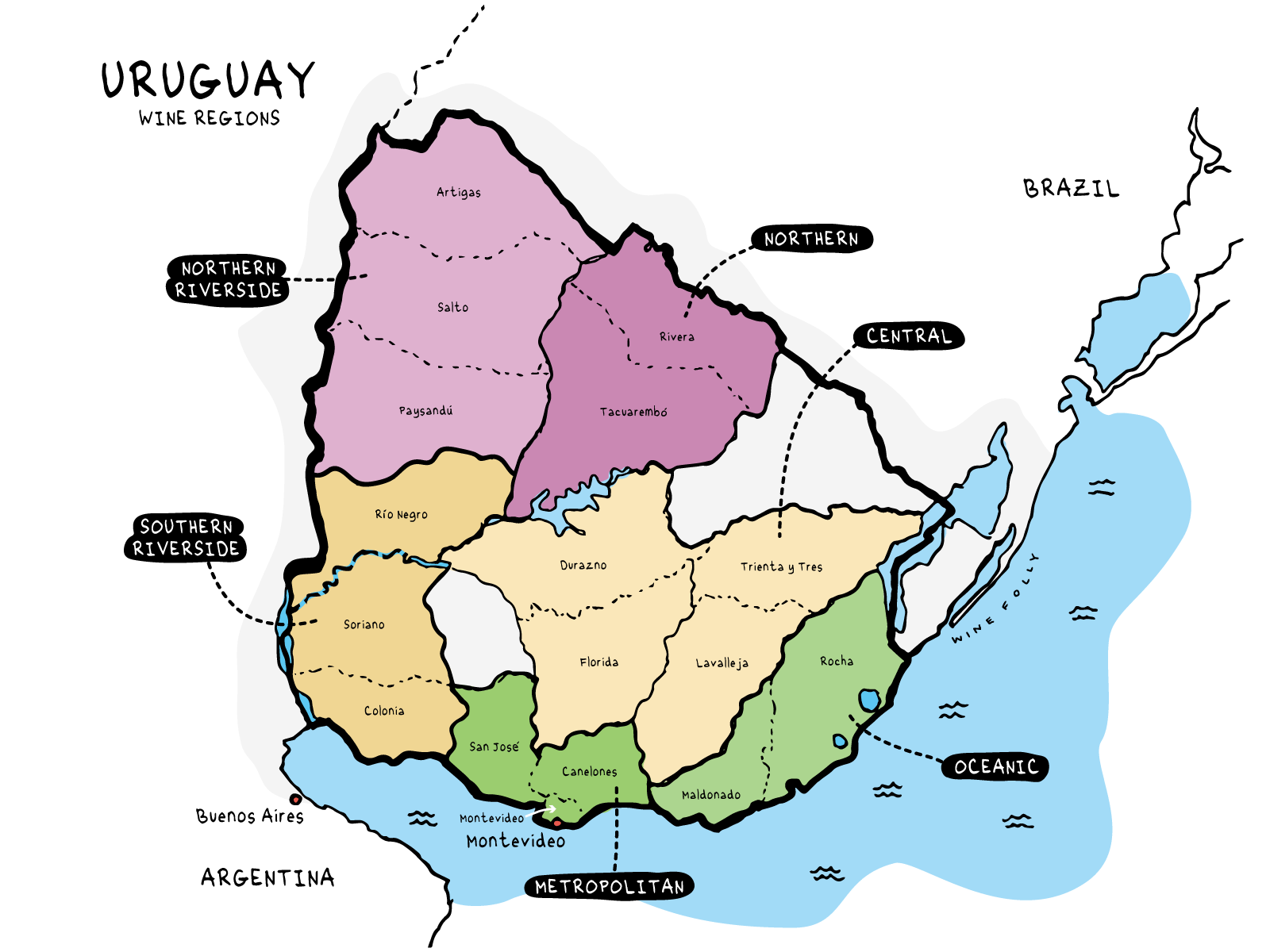
Fun Facts
Land of Tannat
27% Tannat
Tannat accounts for 27% of all vineyard plantings.14,800 Acres
A total of 14,800 acres (6,000 hectares) of vineyards.32% Sustainable
Over 30% of Uruguay's vineyards are certified sustainable.168 Wineries
There are 168 wineries in Uruguay.6 Regions
There are 6 wine regions in Uruguay, with 16 sub-regions.76% Red, 24% White
Most of the grapes planted in Uruguay are red varieties.
Wines to Explore
Tannat and Beyond
Tannat is the heart of Uruguay’s wine scene, but it is enriched by a diverse range of grape varieties brought by immigrants from across Europe.
- Tannat
- Moscatel de Hamburgo
- Merlot
- Cabernet Sauvignon
- Sauvignon Blanc
- Albariño
Primary
Uruguay Grapes

Tannat
Full-Bodied Red Wine
Tannat is the star of Uruguay, offering robust tannins, deep color, and rich flavors of dark fruits and spices. Originally brought by Basque immigrants, Tannat thrives in Uruguay's maritime climate, where it develops a softer, more elegant character compared to its counterparts in France. Known for its aging potential, Tannat also contains high levels of antioxidants like polyphenols and resveratrol, which some studies suggest may help reduce the risk of heart disease.






Moscatel de Hamburgo
Aromatic Rosé and Sweet Wine
Also known as Black Muscat, this red skinned grape is Uruguay's second most planted variety and is a versatile and aromatic grape. It is commonly used to produce both sweet wines and light, refreshing rosés. This variety, brought by Spanish and Portuguese immigrants, is prized for its vibrant floral and fruity notes.






Merlot
Medium-Bodied Red Wine
Merlot is a popular grape in Uruguay, often blended with Tannat to soften its tannins. It produces smooth, medium-bodied wines with flavors of red fruits, herbs, and a touch of earthiness. The grape's softer tannins and balanced acidity make it approachable and versatile, suitable for many types of cuisine.






Cabernet Sauvignon
Full-Bodied Red Wine
Cabernet Sauvignon, a classic Bordeaux variety, contributes structure and complexity to Uruguayan wines. Grown throughout the country, this grape exhibits dark fruit flavors, firm tannins, and hints of tobacco and spice. It is often blended with Tannat or Merlot, resulting in wines with depth, balance, and a rich finish.





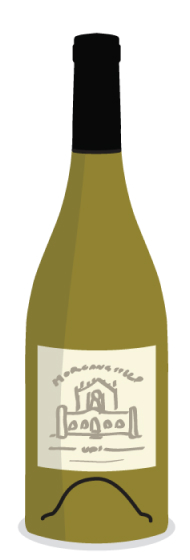
Sauvignon Blanc
Light-Bodied White Wine
Sauvignon Blanc thrives in Uruguay's coastal vineyards, producing crisp, dry, aromatic wines with high acidity and vibrant flavors. Expect lively notes of citrus, green apple, and herbaceous undertones.






Albariño
Light to Medium-Bodied White Wine
Albariño, a variety originally from Galicia in Spain, has found a welcoming home in Uruguay, particularly in coastal areas. This white grape produces semi-aromatic wines with bright acidity and flavors of stone fruit, citrus, and floral notes. Its refreshing profile and natural salinity make it an ideal match for seafood and lighter dishes.





Selected
Uruguay Wines
Featured
Uruguay Wineries
Wine Regions
A Mosaic of Vineyards
Uruguay has 5,905 hectares (14,592 acres) of vineyards, mostly concentrated in the south near the Río de la Plata. Five main regions - Montevideo, Canelones, San José, Maldonado, and Colonia - represent 90% of the country's vineyards, showcasing diverse microclimates and terroirs that contribute to a rich variety of wines.
Metropolitan
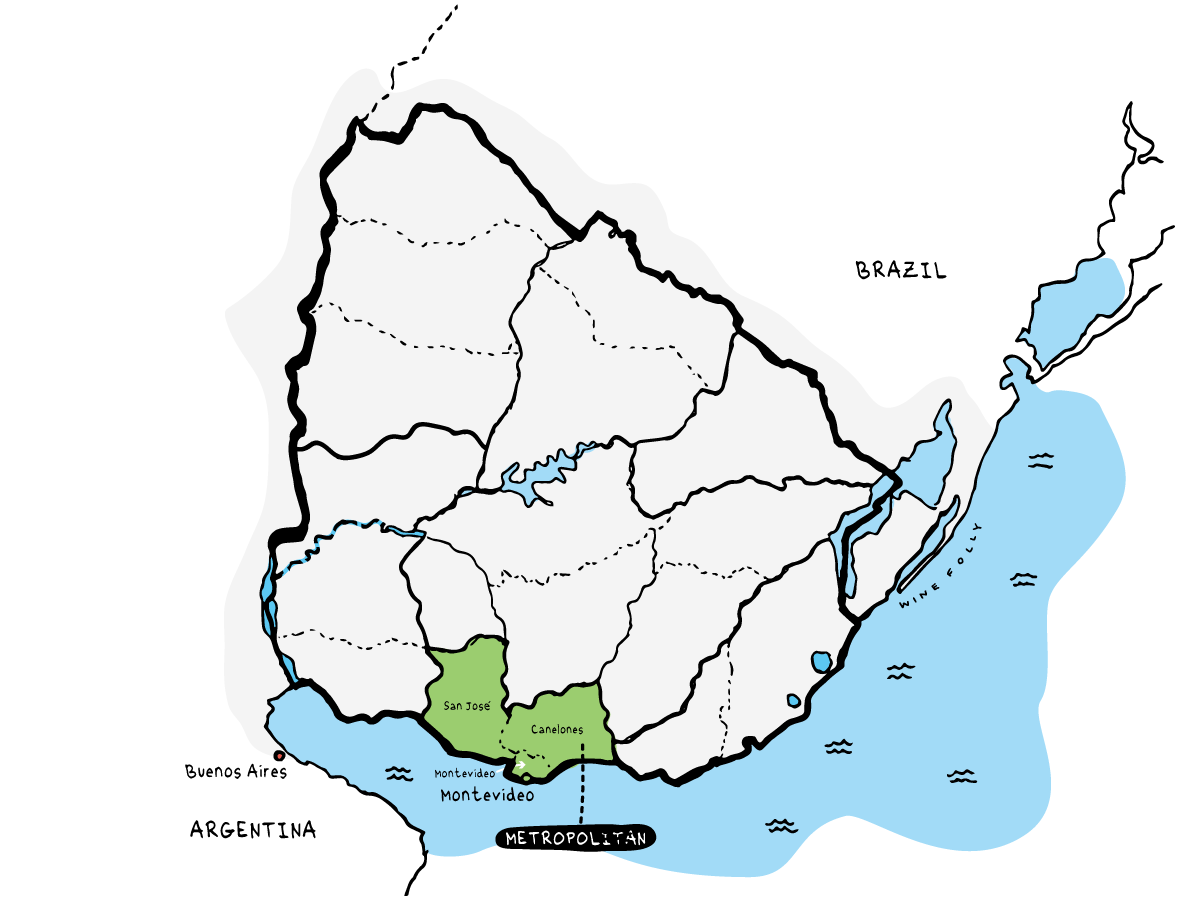
Canelones
This is the heart of Uruguay's wine production, responsible for 65% of the country's wines. It has a gently rolling landscape and features diverse soils, including 600-million-year-old pink granite, which gives a mineral backbone to the wines.
Montevideo
Home to some of Uruguay's oldest vineyards, and where we see vineyards edge up against urban landscapes. It has enough annual rainfall to make irrigation unnecessary, resulting in fresh, yet savory wines.
San José
The fourth-largest production area in the country, it is known for its Tannat and similar climatic conditions to Canelones.
Wineries in Metropolitan
Oceanic
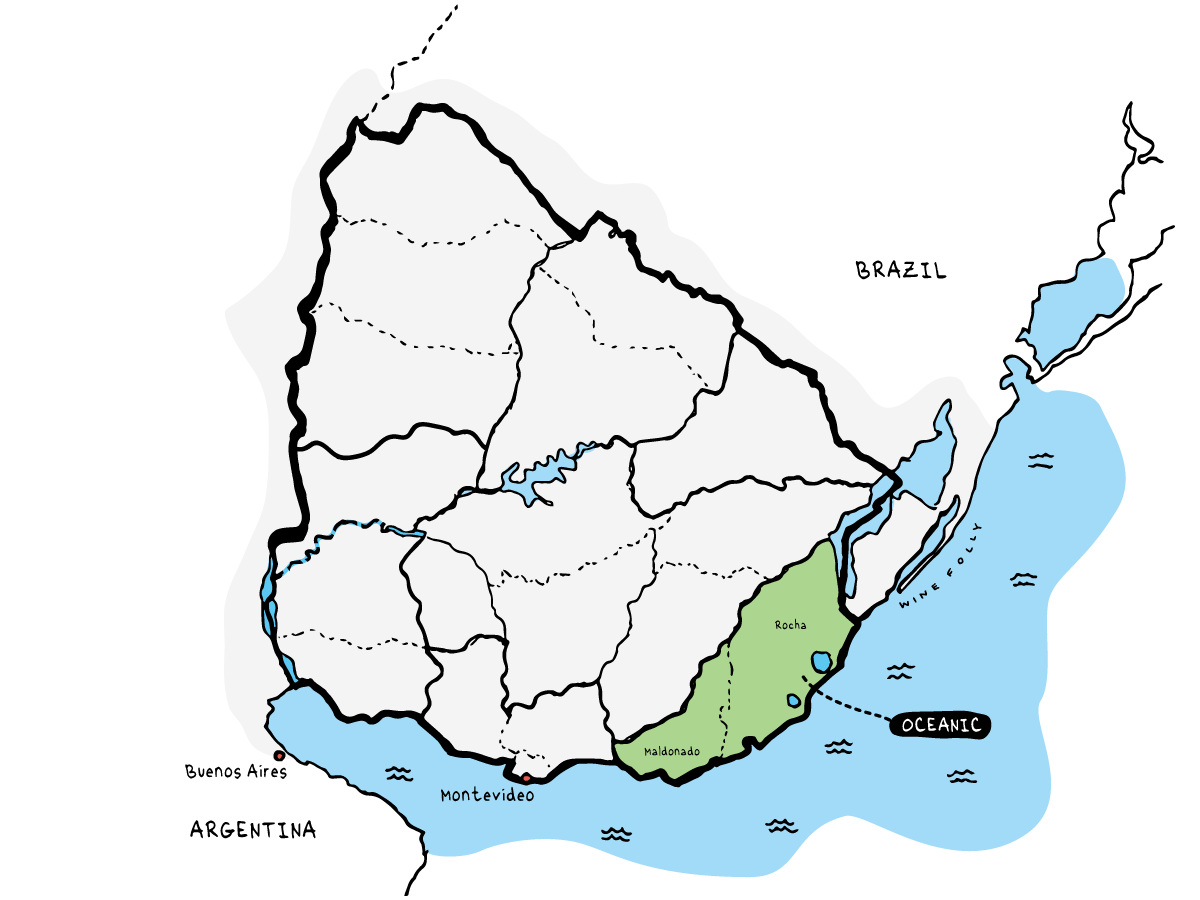
Maldonado
An emerging wine area with diverse soils, including ancient crystalline rocks and well-drained gravel, contributing to mineral-rich, powerful wines - especially Tannat. It also produces saline and savory examples of Albariño too.
Rocha
Benefits from the Atlantic's cooling effects, producing fresh and distinctive wines. Though only a few vineyards are planted here, we can find cooler climate grapes such as Pinot Noir.
Wineries in Oceanic
Southern Riverside
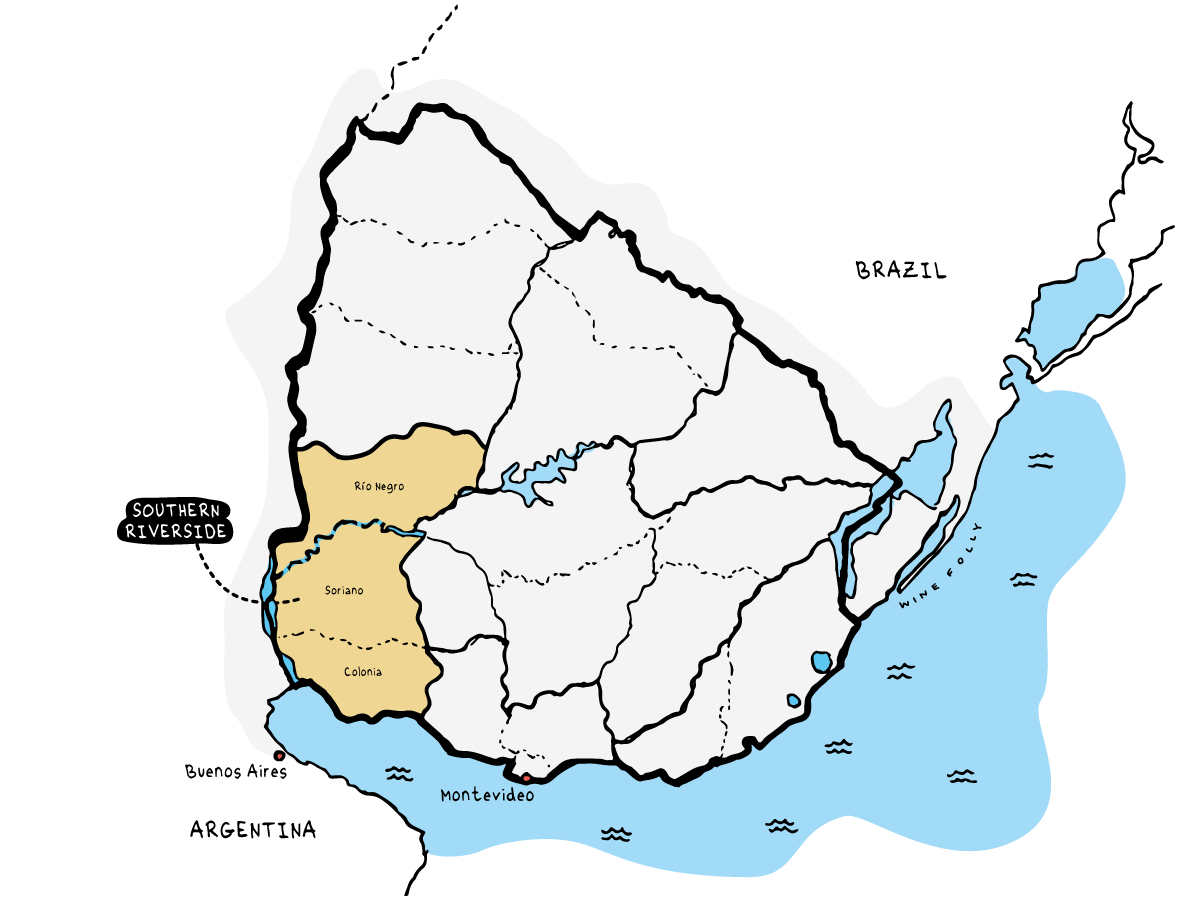
Colonia
Known for its stony soils and rich heritage, including the oldest winery in Uruguay. The area around Carmelo and the San Juan River, with their unique terroirs and mild climate, are especially suited for high-quality red wines.
Soriano
With just a few vineyards situated along the Uruguay River, we can find fertile alluvial soils with good drainage, ideal for producing full-bodied red wines, particularly Tannat.
Río Negro
Characterized by sandy-clay and calcareous soils, Río Negro enjoys a climate moderated by the river, producing wines with both depth and finesse. The region is noted for structured and well-balanced Cabernet Sauvignon, Merlot, and Tannat.
Wineries in Southern Riverside
Northern Riverside
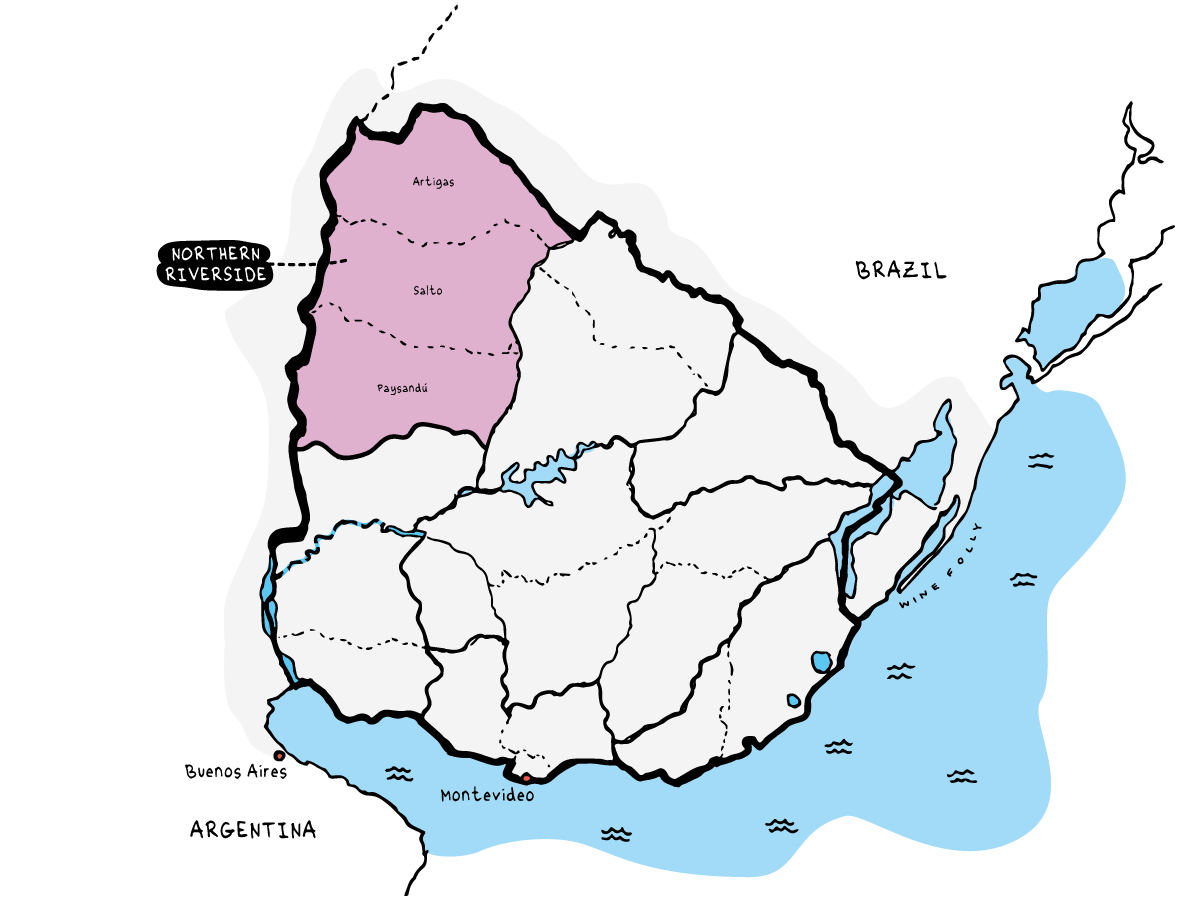
Artigas
Characterized by deep soils over sandstone, with high temperatures and significant humidity, ideal for producing wines with intense flavors and aromas.
Paysandú
Known for its fertile, calcareous-rich soils, ideal for Tannat, Cabernet Sauvignon, and Syrah, contributing to wines with rich flavors.
Salto
Features silty, sandy soils over gravel with good drainage, ideal for fine wines, especially Tannat, which develops a well-rounded, softer profile due to significant day-night temperature variations.
Wineries in Northern Riverside
Northern
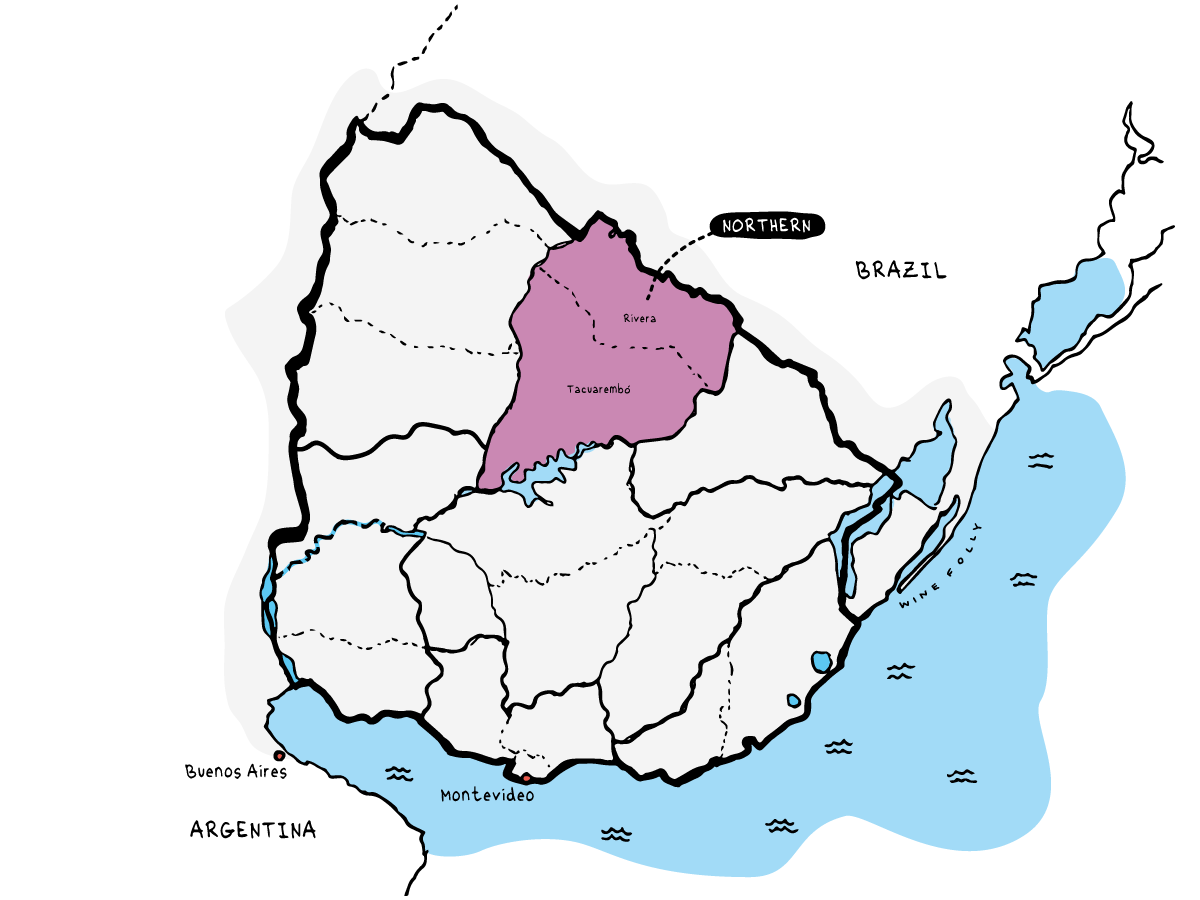
Rivera
Notable for its vineyards on hills and deep red sandy soils with excellent drainage, particularly in Cerro Chapeu. At around 720 feet (220 meters) in elevation, with a drier continental climate and longer sunlight hours, it's an excellent area for late-maturing varieties like Cabernet Sauvignon.
Tacuarembó
Benefits from similar geological characteristics, producing wines with concentrated flavors and deep color, such as Cabernet Franc.
Wineries in Northern
Central
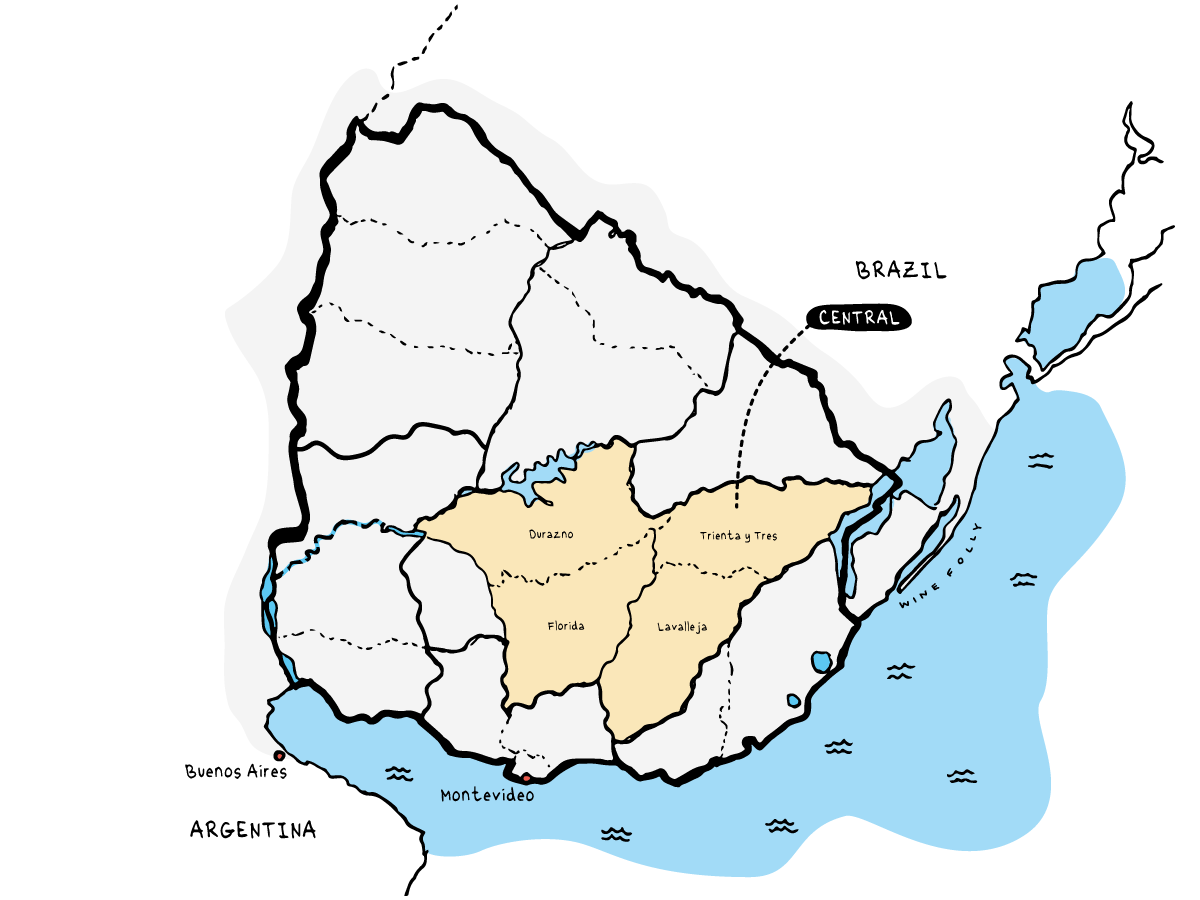
Durazno
With just a handful of vineyards, this region has a range of varieties including Tannat but also Malbec and Viognier.
Florida
Features varied elevations and soils, it has just a few vineyards in the whole region with grapes ranging from Black Muscat to Marselan.
Lavalleja
Rolling hills with well-drained soils contribute to complex, aromatic wines, such as Black Muscat, the second most planted grape in Uruguay.









